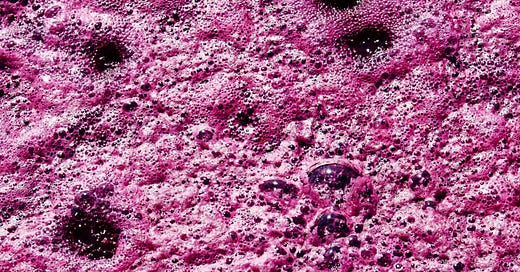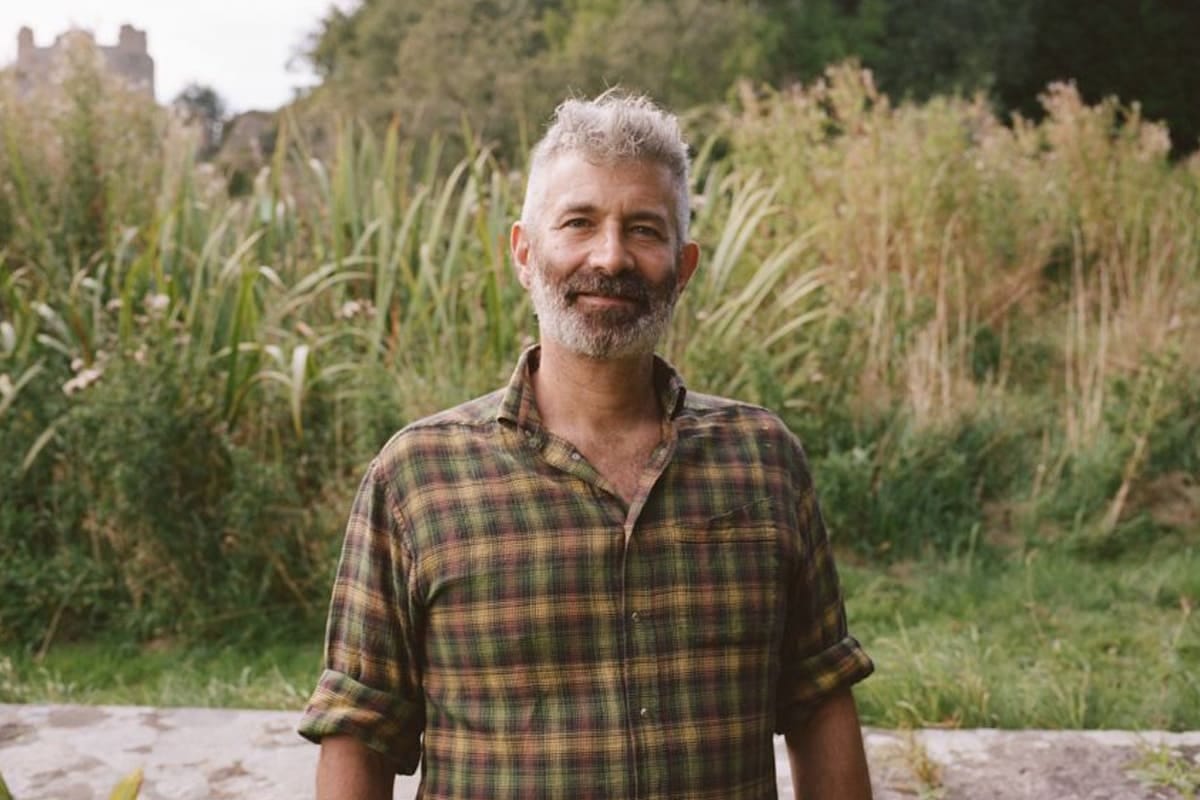Nine years ago, a man named Stephen Le traveled around the world to determine the ideal way to eat. He came to a simple conclusion, which he summated in a handy directive: eat like your family — 500 years ago.
I’ve thought about this imperative a lot in recent years. Both of Le’s parents were born in Vietnam, making it somewhat easy for Le to revert to an ancestral diet. But what about those of us, like me, whose families, 500 years ago, were scattered across Asia, North Africa, Europe, and New Spain?
I have two parents: an Indian mother and an American father. For us, food is a big deal; 85% of my conversations with my mother revolve around food as a practical, emotional, or ritualistic endeavor. What are we making for dinner? she asks me when I’m home for a visit. We? I think to myself, and then remember what cooking is, for her and much of the world: an act of communion. When I’m not home, she texts me photos of what she’s made. I’m walking down the street and swiping into my phone when I see a cooked fish with the accompanying message: Pomfret I got fresh from the market and grilled today :).
My mother has been transmitting her cultural recipes to me in a slow drip since birth, as if through an IV. I know what my Indian ancestors ate 500 years ago because I grew up watching my mother cook many of the same dishes. Now, when I don’t know what to make for dinner, I either call my mother or scan my memories for the dishes she made me when I was young.
My father talks less about food and more about nutrients. He cares little for taste: for him, it’s all about the body, the cells, the metabolism. He’s a scientist for a living, so it checks out. When my mother’s gone, he survives off an insane diet of yogurt, horseradish, nuts, and tea. I go to my dad when I want to discuss AGEs and antioxidants; my mother when I want to discuss cooking as an art or nostalgic practice.
Eating well through long winters
The other day, I was talking to my dad about the harsh Montana winters, the scarcity of fresh, straight from the ground, local food. He reminded me of his family, who have been ambling about the continent called North America for a long time: since the 1500s and, in some cases, before. They lived in the mountains and deserts of northern New Mexico; others grew crops in North and South Dakota. What did the North Dakotans eat in the winter? What about before they immigrated, when they lived in Holland and Germany?
It occurred to me that the answer to my predicament, as well as to my questions about how to eat like my (father’s) ancestors was simple: fermentation. Fermentation is the best and most accessible way to preserve summer and autumnal yields to last the long winter.
I’ve been fermenting for a couple of years, ever since a friend showed me fermentation king Sandor Ellix Katz’s book Wild Fermentation. That same day, I bought radishes from a neighbor, skinned them, and starting fermenting them with my friend right on my kitchen counter. Four days later, I cracked open the same jar. It was like entering into a magical portal to an alternate dimension. The inside of the jar was the color of lavender, tinged by the radishes, and it emitted a sweet, sour aroma. The turnips, formerly hard and bitter, were now soft with a slight crunch.
Katz’s book became a big deal for me: in it, he succinctly and simply outlines everything you need to know about fermenting your food. It’s 285 pages long, mostly because he fastidiously answers every possible question about fermentation and provides ample photos and stories. But really, the essence of fermentation is quite simple. You can start fermenting on your kitchen countertop today with 25 minutes (maybe even 15). But first:
Why ferment at all?
Most of us know that fermentation preserves food — and thereby nutrients — in otherwise perishable foods. It does so by alcohol, lactic acid, and acetic acid: bio-preservatives that also fend against the growth of pathogens.
But the real magic of fermentation lies in its ability to create new nutrients: microbial cultures, as they transform through their cycles, create B vitamins (folic acid, riboflavin, niacin, thiamin, biotin), antioxidants (which purge free radicals), lactic acid, which produces omega-3 fatty acids, and most importantly bacteria, which are probiotic and enable us to digest our food. These bacteria make us happy (serotonin) and build our immunity and thus our ability to fend off illness.
This is only half of the equation. The real selling point for fermentation, for me, is Katz’s argument that eating live cultures is an opportunity to “resist the culture of mass marketing and commodification.”
He quotes Wendell Berry: “Both eater and eaten are thus in exile from biological reality. And the result is a kind of solitude, unprecedented in human experience, in which the eater may think of eating as first a purely commercial transaction between him and a supplier, and then as a purely appetitive transaction between him and his food.”1
Fermentation is an ancient ritual. No matter who you are or where your family hails from, your ancestors fermented their foods. Humans were fermenting before they wrote words and made pottery. They were drinking mead, the result of honey mixing with water, and giving thanks to God.
Fermentation is a way to connect with our pasts and our current environment — the landscapes around us, which bore the people we call ancestors, as well as the food that sustained them.
Do it yourself
Lacto-fermented foods, which are different from pickled foods, are simple to make. You likely own all of the necessary ingredients. All one needs is a glass jar, a shot glass that fits inside the mouth of said glass jar, sea salt, warm water, and any vegetable. I most commonly ferment hard vegetables: turnips, radishes, beets, and carrots — but you can use anything you have on hand.
First, skin the vegetable and chop into 2 inch pieces. Stack the vegetable pieces in the jar with as little wiggle room as possible.
Optional: add in some peeled garlic, peppercorns, or even ginger slices if that strikes your fancy. If you don’t possess any of those, don’t worry and proceed with step 3.
In a separate glass, mix together a mixture of salt and water. The ratio you want is 2 cups (500 ml) warm, dechlorinated water : 1.5 tablespoons sea salt. Make sure the salt dissolves into the water. This is called your brine.
Pour the brine into the jar until the vegetables are completely submerged.
Now, the trickiest part: you don’t want the vegetables floating to or even touching the surface of the water. If that’s happening, cut a bigger chunk of your vegetable and use it to hold the others down. After I do that, I place a (clean) shot glass horizontally on the top of the jar and screw the lid on tight. This ensures that mold and unwanted bacteria stay out of your ferment! I use a clean shot glass because I can’t be bothered to buy a fermentation weight — this nice lady offers several other household objects you can put to use as weights.
Place on the counter and wait. After 24 hours have passed, unscrew the jar lid to let out air. Then screw it back on and leave undisturbed. Do this every day until about 4 days have passed. Your fermented food might be ready at this time! Taste it. Sourness depends on room temp. Leave it on the counter (with the shot glass weight, same as before) if you want it more sour. If they start to get soft or reach peak sourness, move the jar to the fridge.
If you want to learn how to ferment every other kind of food, from rice to buckwheat to kombucha, I recommend picking up Katz’s book Wild Fermentation.
If you’ve fermented your food before, or have other easy, at-home ideas for introducing microbial cultures into your life, I would love to hear them — please drop it below in the comments.
In the meantime, thank you for reading East/West — I’ll see you next week. ✦˚*
Note: I am not a doctor — East/West is an exploration of what it means to feel well, not medical advice.
Wendell Berry, What Are People For?, 1990, excerpted as “The Pleasures of Eating,” The Sun (January 2002), 18.








